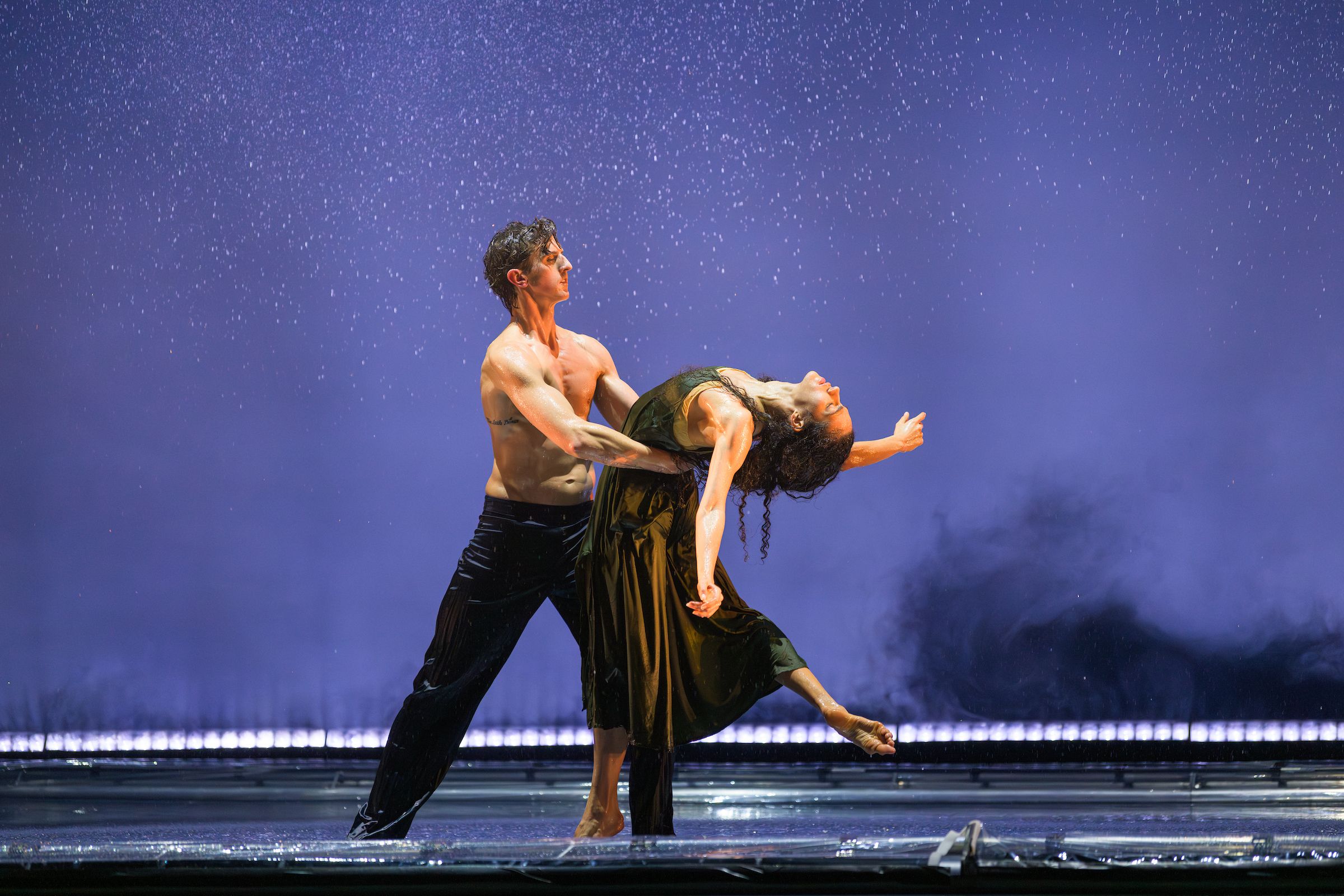Review: Lightscapes
Imagery by Stephen A’Court.
The Royal New Zealand Ballet is back with another series of four ballets to warm you up this winter. Celebrating the power and possibility of dance, these four ballets range from the classic to the experimental, a wonderful tableau that accurately sums up the RZNB’s 70th anniversary.
Opening the show is George Balanchine’s Serenade, staged by Rebecca Metzger. 89 years after it was first staged, this iconic ballet is performed to Tchaikovsky’s Serenade, and is a quintessential example of Balanchine ballet with long lines, strong and structured performance and beautiful stage patterns. Though plotless, this large cast ballet (20+ performers) floats between duos, triplets and larger group pieces; an admirable show of timing and composition.
The premiere of Moss Te Ururangi Patterson’s Te Ao Mārama is a triumph in performance and a deeply powerful work, imbued with implicit Māori identity – it’s the first Māori ballet I’ve ever seen but I sincerely hope not my last. A solo shirtless performer on stage moves to the sound of taonga pūoro (Ariana Tikao), alongside a undercurrent thrum of electric sonic guitar (Shayne Carter), before being joined by fourteen other male performers for a group work that folds and unfolds through identity, gender and consciousness. This work is spectacular; with a full segment with no music, only the sounds of the performers’ footfalls and breathing, and culminating in a full haka.
Annabelle Lopez Ochoa’s Requiem for a Rose opens with a single dancer onstage (Soloist Kirby Selchow), dressed entirely in nude fabric, holding a rose in her mouth. Her angular, sharp dancing draws in the other performers, both male and female alike, all wearing bright red skirts that flutter about them like flower petals. The romance is interwoven throughout the piece as the dancers couple up and fall apart again – 1000 love stories all at once. With all performers wearing the same things (nude shirts on the women), gender slips away, decoupling this dance from the heterotopic ballet we all know so well, to a world where roles are shared and people of all genders are partnered together.
The night closes with a monumental piece of staging in Alice Topp’s Logos. Set to the works of my favourite composer, Ludovico Einaudi, this series of trios and duets explore heavy emotions and brutal intimacy; with daring holds, leaps and balances – as smoke builds up behind a plastic curtain at the back of the stage everything feels on a knife’s edge. Until, there is a release – the plastic curtain drops to the stage, smoke billowing out towards the audience and around the final pair of dancers (Ana Gallardo Lobaina & Matthew Slattery), like ragged storm clouds in the sky. Rain falls from the ceiling, drenching the two performers, and they move together, deeply intimate, a heavier pastiche of a scene from a rom-com. This moment is a masterwork of an ending to a very strong programme.
As we move through the RNZB’s 70th year, I continue to enjoy the company pulling away from ballet’s very heterosexual Eurocentric roots to something that’s much more interesting and far more reminiscent of the human experience – queering dance, decoupling the works from their colonialist ideals in passionate, moving ways – it’s very welcome, and I hope it continues.

